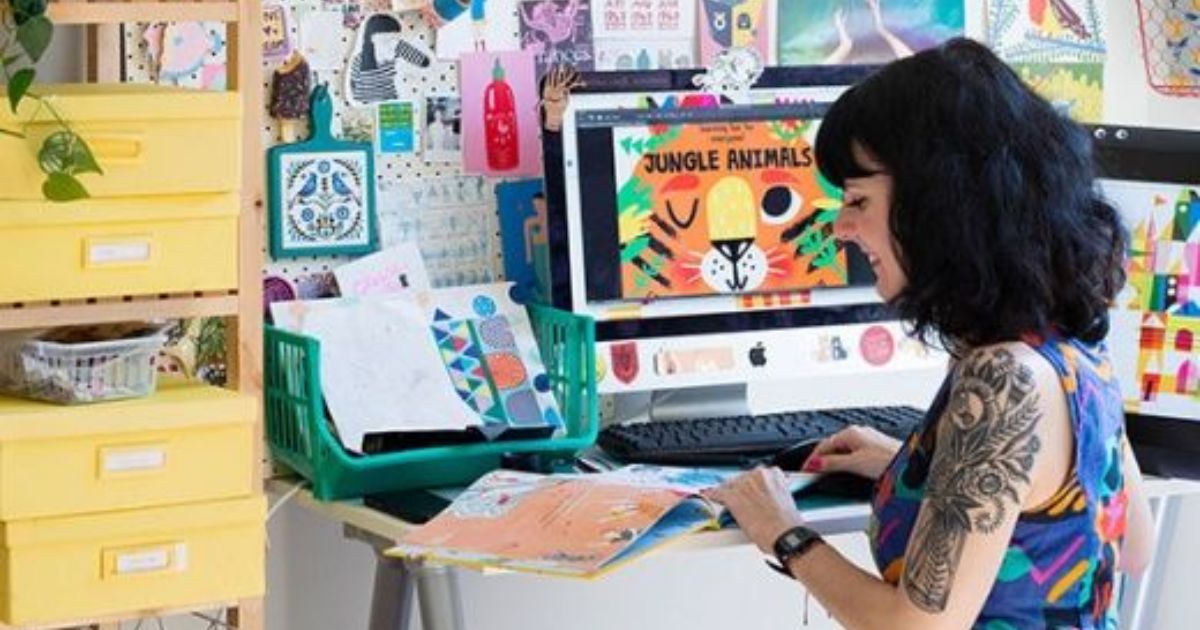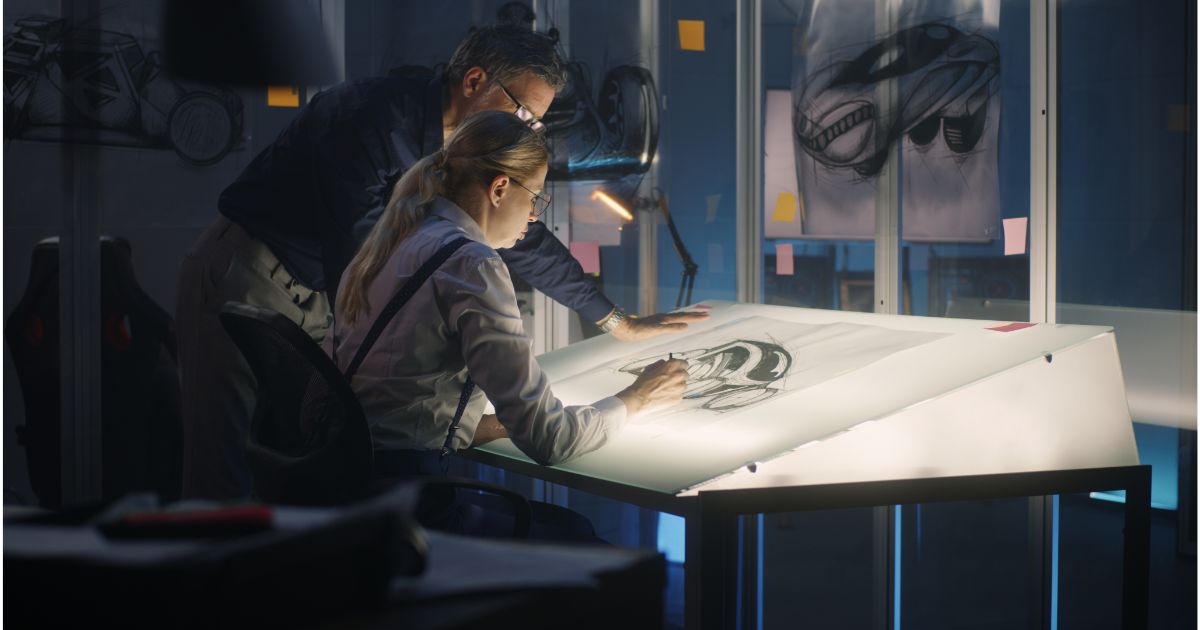How to Become a Designer? Skills & Responsibilities
Designers are the creative architects of our visual world, shaping everything from the products we use daily to the spaces we inhabit and the digital interfaces we navigate. But what exactly does it mean to be a designer? Beyond the surface of artistic expression lies a profession rooted in problem-solving, innovation, and meticulous craftsmanship.
In this article, we delve into the multifaceted role of designers, uncovering what they do across various disciplines—from graphic design to architecture—and exploring the essential skills and pathways to becoming a successful designer.
Join us on a journey to discover what makes a designer, the pivotal tasks they undertake, and the essential skills every aspiring designer must cultivate to thrive in today's creative landscape.
What is the Designer?

A designer is a professional who specializes in creating and conceptualizing solutions to meet specific needs or solve problems.
In essence, a designer conceptualizes and creates new ideas, products, or experiences. They use their creativity and problem-solving skills to bridge the gap between an initial idea and a finished product or service. Designers can work in a wide range of fields, and the specifics of their work will vary depending on the area of design they specialize in. Designers shape everyday experiences, from the products we use to the spaces we inhabit and the digital interfaces we interact with.
What Does a Designer Do?

A designer weaves creativity, technical skills, and critical thinking to bring their visions to life. Here's a closer look at what designers typically do:
Understanding the Problem
Designers begin by identifying a user need or a problem that needs a solution. Their tasks are anything from making a website more user-friendly to creating a new line of clothing or designing a more efficient workspace.
Research and Brainstorming
Once they grasp the challenge, designers delve into research. They understand the target audience, study current market trends, and explore existing solutions. With this knowledge, they brainstorm creative ideas and develop initial design concepts.
Bringing Ideas to Life
Many designers rely heavily on visual communication skills. They use tools like sketching, prototyping, and creating mockups to translate their ideas into a tangible form that can be understood and evaluated.
Collaboration is Key
Designers rarely work in isolation. They often collaborate with a team of professionals like engineers, marketers, and developers to refine their designs to get successful results.
Problem-Solving Throughout
The design process is iterative, meaning there's a constant loop of feedback and refinement. Designers need strong problem-solving skills to address challenges that arise during testing and incorporate feedback to improve their designs.
Specialization is Common
The design field is vast, and designers often specialize in a particular area. Here are some examples:
Visual Designers: Focus on creating visually appealing graphics for various purposes, like logos, marketing materials, and user interfaces. It encompasses specializations like graphic design, web design, and UI/UX design.
Product Designers: Develop physical products, considering functionality, usability, and aesthetics throughout the design and manufacturing process.
Fashion Designers: They stay updated on fashion trends, colors, and fabrics to create collections that appeal to target markets and reflect current styles. Fashion Designers conceptualize and create clothing and accessories, keeping trends, style, and wearability in mind.
Interior Designers: Plan and design the interior spaces of buildings, focusing on functionality, aesthetics, and space optimization.
How to Become a Designer?

Becoming a designer is an interesting and challenging journey. You must develop a combination of skills, education, experience, and creativity tailored to your chosen field of design.
Choose Your Design Discipline
The design world is vast. Take some time to explore different design specializations like graphic design, product design, fashion design, interior design, etc. Browse online portfolios, design websites, and social media platforms to see what resonates with you visually and conceptually.
Obtain Relevant Education and Training
The truth is that education isn't mandatory to become a designer, but it can provide valuable benefits.
Formal Education
Many designers start by earning a degree related to their chosen field of design. It could be a Bachelor’s degree in Graphic Design, Fashion Design, Industrial Design, Interior Design, Architecture, or related fields. Some positions may require a Master’s degree for more advanced roles.
Specialized Courses and Workshops
Apart from formal education, consider taking specialized courses, workshops, or online tutorials to develop specific skills such as software proficiency (e.g., Adobe Creative Suite for graphic design, AutoCAD for architectural design), design principles, and industry trends.
Develop Skills and Technical Proficiency
When you find suitable areas to focus on, the next step is developing the skills and technical proficiency needed to thrive in the design industry.
Design Fundamentals
Regardless of your chosen specialization, a strong foundation in design principles like composition, color theory, typography, and user experience (UX) is critical. Many online courses, workshops, and even certificate programs can teach you these fundamentals.
Software Skills
Most design fields rely on specific software programs. For instance, graphic designers might use Adobe Photoshop and Illustrator, while web designers might use tools like Figma or Webflow. Familiarize yourself with the relevant software for your chosen field. There are plenty of online tutorials and resources available to help you learn.
Creative Skills
Cultivate your creativity through sketching, conceptualizing ideas, understanding color theory, typography, and layout principles. Experiment with different mediums and styles to develop your unique artistic voice.
Build a Strong Portfolio
Even if you're a beginner, start building a portfolio to showcase your design skills and thought process.
Create Projects
Start building your portfolio early by working on design projects, whether for academic assignments, internships, freelance work, or personal projects. Your portfolio should showcase a variety of your best work across different mediums and styles relevant to your chosen field.
Portfolio Presentation
Present your work in a professional and organized manner. Highlight your process, problem-solving skills, and the outcomes of each project. Your portfolio will demonstrate your skills and attract potential employers or clients.
Gain Practical Experience
Don't wait for opportunities to come to you. Let's actively seek out design experience! You'll gain the practical skills and confidence needed to launch a successful design career.
Internships and Entry-level Positions
Seek internships or entry-level positions in design studios, agencies, or companies within your chosen industry. Practical experience will provide valuable insights, hands-on training, and networking opportunities.
Freelance Work
Once you have some skills under your belt, consider taking on freelance projects to build your portfolio and gain client experience.
Volunteer Work
Volunteer your design skills to non-profit organizations or for social causes. You will give back to the community while honing your skills.
Stay Updated and Evolve
The most successful designers are lifelong learners who adapt, explore, and consistently push themselves to evolve. Design is a dynamic field that evolves with technology, trends, and user expectations. Stay updated on industry developments, new software updates, design methodologies, and best practices through continuous learning and professional development.
Seek Career Opportunities
Once you have gained relevant education, skills, and experience, start applying for full-time positions or higher-level roles within design firms, corporations, agencies, or as a freelancer. Tailor your applications and portfolio to match the specific requirements and culture of each prospective employer.
You can consider starting your own design business or consultancy if you have a strong entrepreneurial drive and desire for creative independence.
Essential Skills for Aspiring Designers

Aspiring designers need a unique blend of creative and technical skills to thrive in this exciting field. Here's a breakdown of some essential skills to cultivate as you embark on your design journey:
Creativity and Artistic Ability
Creativity and artistic ability form the foundation of any successful designer. Visual communication skills let designers translate these ideas into visual representations effectively. Basic sketching and drawing skills are also important for illustrating concepts and taking steps as a tangible starting point for more advanced work.
Design Principles
A solid understanding of design principles is vital. Typography depends on knowing fonts, typefaces, and their appropriate applications. Color theory entails knowledge of color schemes, the psychology of colors, and color mixing. Effective layout and composition skills enable designers to organize elements within a design for optimal communication and aesthetics. Visual hierarchy can prioritize elements to guide the viewer’s attention.
Problem-Solving Skills
Critical thinking assists in analyzing problems and developing creative solutions. Meanwhile, design thinking is a structured approach to understanding user needs, ideating solutions, and iterating based on feedback.
Communication Skills
Verbal communication is an important factor in articulating design concepts and rationale to clients, stakeholders, or team members. Written communication is momentous for clearly documenting design specifications, instructions, and project details. Presentation skills are necessary for effectively presenting design ideas and concepts to clients or audiences, warranting their vision is understood and appreciated.
Collaboration and Teamwork
Interdisciplinary collaboration is the activity of working with other professionals, such as engineers, marketers, and architects to integrate designs into larger projects. Understanding client needs, managing expectations, and building strong client relationships are vital aspects of client management.
Attention to Detail
Attention to detail ensures the precision and quality of designs. Accuracy in measurements, specifications, and design details is significant. Quality control includes reviewing designs to meet quality standards and specifications, and the final product will be professional.
Time Management and Organization
Effective time management and organization skills benefit designers handle multiple projects and deadlines efficiently. Workflow management is about organizing tasks and resources to optimize productivity and meet project timelines.
Conclusion
The world of design is a vast and ever-evolving landscape, brimming with opportunities for creative problem-solvers. As you've explored in this guide, designers are the bridge between imagination and reality, weaving creativity, technical skills, and critical thinking into tangible solutions.
Whether you're drawn to the visual appeal of graphic design, the functionality of product design, or the user-centric approach of UX design, there's a design niche waiting to be explored. Remember, the key to becoming a designer is to cultivate your creative spark, hone your skillset, and build a strong portfolio that showcases your unique talents.
To become a designer is to embark on a journey of continual growth, embracing challenges as opportunities to innovate and evolve. Let Skilltrans become your guide to your career dream. You can register for our courses today at the most preferential prices.

Meet Hoang Duyen, an experienced SEO Specialist with a proven track record in driving organic growth and boosting online visibility. She has honed her skills in keyword research, on-page optimization, and technical SEO. Her expertise lies in crafting data-driven strategies that not only improve search engine rankings but also deliver tangible results for businesses.



